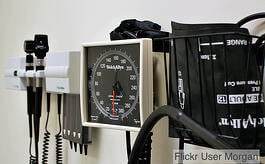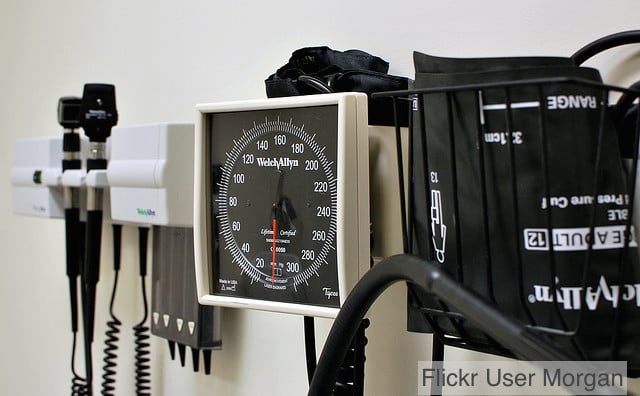The body has four main vital signs that doctors use all around the world to determine the condition of a patient. The four vital signs are body temperature, pulse rate, respiration (breathing) rate, and blood pressure. These are measurements of the basic functions that keep you alive. They need to be functioning properly for anything else to work, including your brain! These metrics are just four of the hundreds of potential measurements that a doctor could use to assess the health of a patient. However, the four vital signs are the most important elements of a patient’s current state of health. Once the vital signs are stable, the doctor can begin to diagnose the long-term treatment of the patient, but they don’t do that until they know the vital signs have stabilized. Do you know the vital signs for your company's success in achieving its strategic plan and key business objectives?
patient. The four vital signs are body temperature, pulse rate, respiration (breathing) rate, and blood pressure. These are measurements of the basic functions that keep you alive. They need to be functioning properly for anything else to work, including your brain! These metrics are just four of the hundreds of potential measurements that a doctor could use to assess the health of a patient. However, the four vital signs are the most important elements of a patient’s current state of health. Once the vital signs are stable, the doctor can begin to diagnose the long-term treatment of the patient, but they don’t do that until they know the vital signs have stabilized. Do you know the vital signs for your company's success in achieving its strategic plan and key business objectives?
Just like your body, your company has a series of vital signs that help you to quickly understand the underlying health of your company. Rhythm Systems has three main types of metrics that it recommends that clients use: Targets, Critical Numbers, and KPIs. Each measures a different component of the current and long-term success of your company. Properly working on each one can help your company avoid the use of vanity metrics - things that you measure, but don’t track the health of your company.
Different Types of Business KPIs
- Targets are longer-term goals that give your company something to strive for at a certain point in the future.
- Critical Numbers are important metrics that you want to concentrate on to drive your short-term priorities and make a change in the business.
- Key Performance Indicators, or KPIs, are ongoing metrics that track and measure the health of the company over time.
KPIs need to be KEY performance indicators, meaning they need to be the most valuable metrics that drive the overall growth of your company. We recommend that you have 8-12 KPIs to track your performance. You want to measure what you want to move, not everything that moves! If you have more than this currently, you need to whittle down the least important metrics. If it is tough for you to get rid of them all at once, set a goal to eliminate one each quarter until you get it down to the right number. It doesn’t mean that you don’t track those other metrics, they just aren’t the Key Performance Indicators. Just as a doctor has thousands of things they can measure, they only have four vital signs that are the most representative of the overall health of the patient. If doctors can save your life with four metrics, you can make your business thrive with 12!
Easy Guide to Creating Business KPIs
Step 1: Determine What to Measure
- What are the key metrics that tell you if your business is healthy?
- What metrics do you look at to know if our company (or department) had a good week?
- Is there a specific problem you need to solve?
Step 2: Set Clear Success Criteria
- How will you know if you’ve achieved success?
- What’s the goal you are trying to reach?
- When do you know you have a real problem?
Rhythm Systems has its trademarked Red-Yellow-Green success criteria that gives every Rhythm user a quick visual cue as to the performance of each of the KPIs. Green means you are meeting your success criteria; Red is an unacceptable result and may represent a real problem or strategic goal that needs to be addressed. Yellow is between Green and Red and signals that an adjustment needs to made to get the KPI back on track. SuperGreen means it is time to celebrate as you have significantly exceeded your success criteria!
Step 3: Set Company KPI Data Standards
Your data is only as good as what you enter, so be sure you are all reporting it the same way!
- Make sure you are all measuring the same way.
- Agree on a quarterly, monthly, or weekly time horizon.
- Decide on a deadline for updating status and hold the team accountable.
Step 4: Review Your Business KPIs
- Do you have a good mix of leading and lagging indicators?
- Were you blindsided by anything last quarter?
- Are you talking about the right things in your Weekly Meetings
Creating KPIs isn’t easy if you do it right, but it is well worth the effort and can be refined over time to make sure that you are measuring the key indicators that result in performance management and allow you to make real-time decisions. To help get you started, Rhythm Systems has a KPI creator tool and a plethora of additional free KPI resources in our Rhythm Resource Center. These tools will help you guide you down the path to creating the KPIs that allow you to make informed decisions that drive your business to success with effective KPI dashboards.
Here are some KPI Examples to help get you started!
Employee
- Employee Churn Rate
- Revenue Per Employee
- Employee Net Promoter Score
- Employee Satisfaction
Customer KPIs
- Customer Net Promoter Score
- Client Health Index
- Customer Retention Rate
- Customer Satisfaction
Shareholder KPIs
- Price/share
- # Months cash runway
- Total Annual Return
Customer Experience CX KPIs
- Customer Satisfaction Score (CSAT): measures how satisfied customers are with a company's products, services, or overall experience.
- Net Promoter Score (NPS): measures customer loyalty and likelihood to recommend a company to others.
- Customer Lifetime Value (CLV): measures the total value a customer brings to a company over the course of their relationship with that company.
- Churn Rate: measures the rate at which customers stop doing business with a company, indicating the health of the customer base and the effectiveness of retention efforts.
Productivity and Process
Make/Buy/Deliver Business Processes
- Quality / Bugs
- Supplier Mistakes
- On-Time Delivery
- Supply Chain Efficiency
Sales KPIs
- Sales - Actual Versus Plan
- Number of New Qualified Leads
- Opportunity to Win Ratio
Finance KPIs
- Accounts Receivable Days
- Net Profit
- Revenue Growth Rate
- Profit Margin
Looking for some KPI Company Examples to help get you started?
5 Simple Steps to Create Useful KPI's (Video)
27 Recruiting KPIs for the Staffing Industry
33 KPI Examples to Measure Productivity & Prevent Organizational Drag
Employee KPI Examples: How to Measure What (or Who) You Want to Move (Video)
KPI Examples for Successful Sales Teams
Rhythm Systems KPI Resource Center



